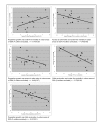Progress towards the child mortality millennium development goal in urban sub-Saharan Africa: the dynamics of population growth, immunization, and access to clean water
- PMID: 17725826
- PMCID: PMC2000892
- DOI: 10.1186/1471-2458-7-218
Progress towards the child mortality millennium development goal in urban sub-Saharan Africa: the dynamics of population growth, immunization, and access to clean water
Abstract
Background: Improvements in child survival have been very poor in sub-Saharan Africa (SSA). Since the 1990 s, declines in child mortality have reversed in many countries in the region, while in others, they have either slowed or stalled, making it improbable that the target of reducing child mortality by two thirds by 2015 will be reached. This paper highlights the implications of urban population growth and access to health and social services on progress in achieving MDG 4. Specifically, it examines trends in childhood mortality in SSA in relation to urban population growth, vaccination coverage and access to safe drinking water.
Methods: Correlation methods are used to analyze national-level data from the Demographic and Health Surveys and from the United Nations. The analysis is complemented by case studies on intra-urban health differences in Kenya and Zambia.
Results: Only five of the 22 countries included in the study have recorded declines in urban child mortality that are in line with the MDG target of about 4% per year; five others have recorded an increase; and the 12 remaining countries witnessed only minimal decline. More rapid rate of urban population growth is associated with negative trend in access to safe drinking water and in vaccination coverage, and ultimately to increasing or timid declines in child mortality. There is evidence of intra-urban disparities in child health in some countries like Kenya and Zambia.
Conclusion: Failing to appropriately target the growing sub-group of the urban poor and improve their living conditions and health status - which is an MDG target itself - may result in lack of improvement on national indicators of health. Sustained expansion of potable water supplies and vaccination coverage among the disadvantaged urban dwellers should be given priority in the efforts to achieve the child mortality MDG in SSA.
Figures




References
-
- UNDP . Achieving the Millennium Development Goals: Population and Reproductive Health as Critical Determinants. Population and Development Strategies Series. New York; 2003.
-
- United Nations . The Millennium Development Goals Report 2005. UN, New York; 2005.
Publication types
MeSH terms
Grants and funding
LinkOut - more resources
Full Text Sources
Medical
Research Materials

